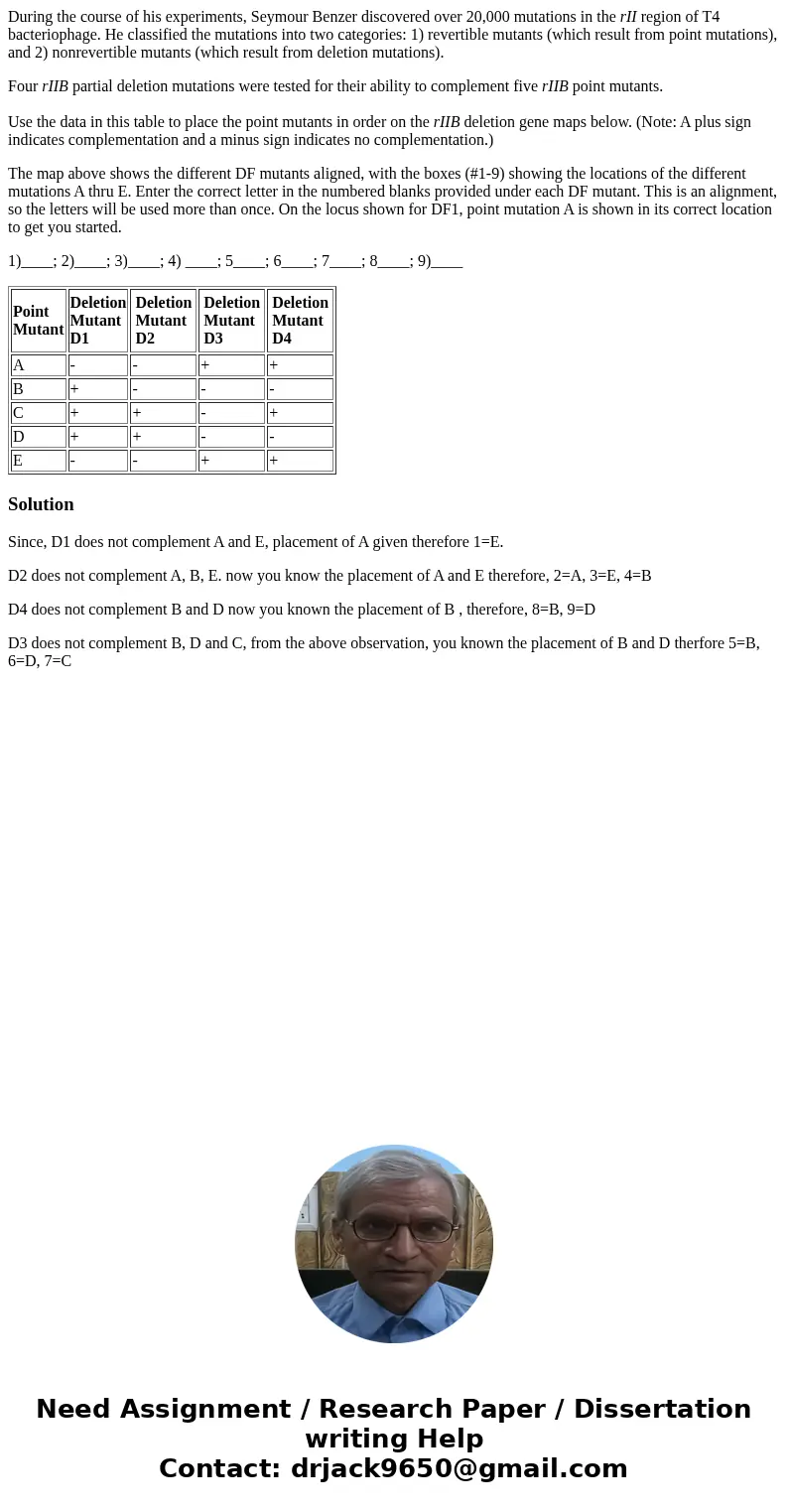During the course of his experiments Seymour Benzer discover
During the course of his experiments, Seymour Benzer discovered over 20,000 mutations in the rII region of T4 bacteriophage. He classified the mutations into two categories: 1) revertible mutants (which result from point mutations), and 2) nonrevertible mutants (which result from deletion mutations).
Four rIIB partial deletion mutations were tested for their ability to complement five rIIB point mutants.
Use the data in this table to place the point mutants in order on the rIIB deletion gene maps below. (Note: A plus sign indicates complementation and a minus sign indicates no complementation.)
The map above shows the different DF mutants aligned, with the boxes (#1-9) showing the locations of the different mutations A thru E. Enter the correct letter in the numbered blanks provided under each DF mutant. This is an alignment, so the letters will be used more than once. On the locus shown for DF1, point mutation A is shown in its correct location to get you started.
1)____; 2)____; 3)____; 4) ____; 5____; 6____; 7____; 8____; 9)____
| Point Mutant | Deletion Mutant D1 |
|
|
| |||
| A | - | - | + | + | |||
| B | + | - | - | - | |||
| C | + | + | - | + | |||
| D | + | + | - | - | |||
| E | - | - | + | + |
Solution
Since, D1 does not complement A and E, placement of A given therefore 1=E.
D2 does not complement A, B, E. now you know the placement of A and E therefore, 2=A, 3=E, 4=B
D4 does not complement B and D now you known the placement of B , therefore, 8=B, 9=D
D3 does not complement B, D and C, from the above observation, you known the placement of B and D therfore 5=B, 6=D, 7=C

 Homework Sourse
Homework Sourse